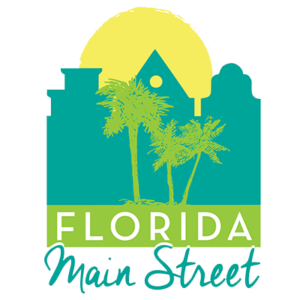The Florida Historical Marker Program recognizes historic resources, persons and events that are significant in the areas of architecture, archaeology, Florida history and traditional culture by promoting the placing of historic markers and plaques at sites of historical and visual interest to visitors. The purpose of the program is to increase public awareness of the rich cultural heritage of the state and to enhance the enjoyment of historic sites in Florida by its citizens and tourists.
G.A.R. Memorial Hall
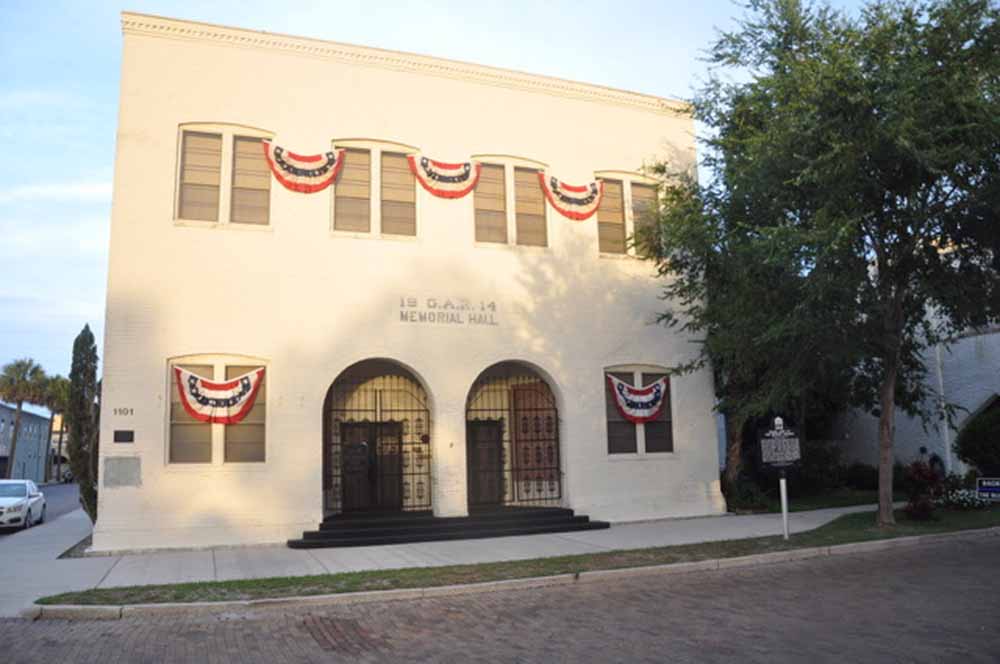
The most recent marker approved is for the Grand Army of the Republic Memorial Hall. The Grand Army of the Republic was a nationwide organization of Union veterans of the Civil War from 1866 to 1949.This 150 by 50 foot building, completed in 1914, was built by the G.A.R. Memorial Hall Association and funded by $8000 worth of stock certificates. The land had been donated by the Seminole Land Investment Company in 1909. Previously, G.A.R. meetings, special events, and other town civic and social meetings had been held in the “old hall” which was to the rear of the present building. The town had been incorporated in the “old hall” and the first civic officials were elected here. The Local G.A.R. post was named after Lucius L. Mitchell who was the first veteran-resident to die in St. Cloud and is interred in Mount Peace Cemetery. E. E. Scranton, the Post secretary wrote in 1914 that the new G. A.R. building had been erected for memory and in honor of the old boys of the Union Army of ’61 -’65 who saved the country for the generations coming after us and saved our glorious flag, the stars and stripes, from dishonor or disgrace in over 2000 battles of that great war. At one time it was the second largest post in the country in membership. M. W. Chessman was the architect/builder.
First National Bank

St. Cloud’s First National Bank opened in 1910. This narrow, two story Masonry Vernacular structure was built from locally produced sand brick, wood beams, and concrete block. St. Cloud residents subscribed over $100,000 of capital stock, twice as much as required by the United States Comptroller. It was the only national bank in the county, and the level of capital stock raised was unprecedented. In 1911, the bank issued $10 notes with a picture of the bank’s first president, William H. Lynn. Though the bank failed in December 1917, the building remained an important part of downtown St. Cloud. Many diverse community organizations and businesses were housed in the building, including the People’s Bank of St. Cloud in 1919, the US. Spanish War Veterans Headquarters in 1934, and the Golden Age Club in 1970. The building was purchased in 1992 by the Chamber of Commerce, which represents over 500 local businesses, and serves as its headquarters. In 1997, the St. Cloud Chamber was awarded a state historic preservation grant to restore the building with support from Florida Secretary of State Sandra Mortham. Following its restoration, the building has also served as a museum devoted to St. Cloud history.
Sugarbelt Railway and VFW Post
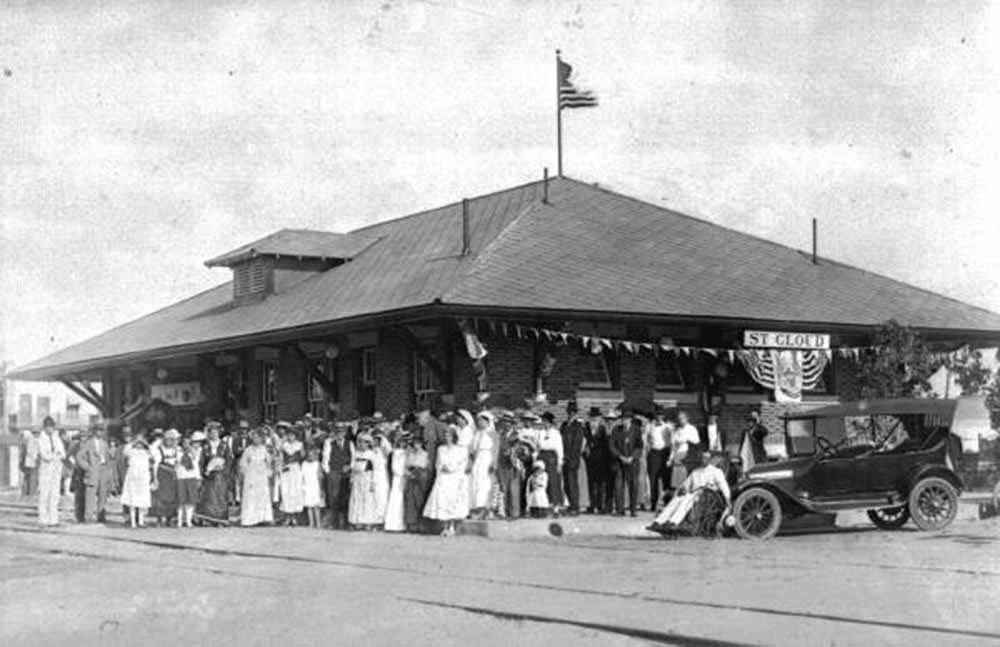
The Sugar Belt Railway Line, built in 1889 by Hamilton Disston, transported sugar and citrus between the town of Narcoossee and Kissimmee. The train made the return trip after being reversed on a turntable at Narcoossee operated by muscle power. The rail line ran through what would become the town of St. Cloud, which was surveyed and platted in 1909 as a result of its location, south of Lake Tohopekaliga and near the railroad. St. Cloud was intended for veterans of the Civil War, and was known as “The Soldier City.” In 1910, a wood-frame depot building was erected to handle passenger and freight service. The building also served as a welcome center for new members of the community arriving on the train. The women of St. Cloud began putting books and magazines in the depot, thereby beginning the town’s first library. In 1925, the Sugar Belt Railway, as part of the Atlantic Coast Line, built a new brick building where the old wood frame building stood. The depot ceased to operate in 1942 because of dwindling traffic between Kissimmee and Narcoossee. The Veterans of the Foreign Wars Post 3227 purchased the building to use as their post headquarters in 1943.
Veterans Memorial Library
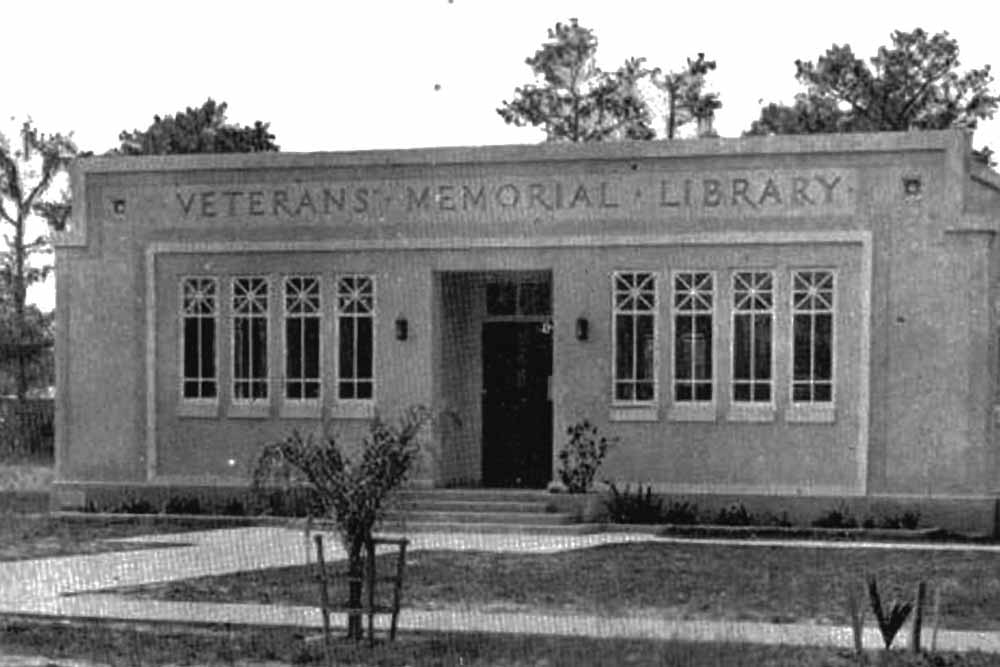
The Ladies Improvement Club of St. Cloud organized in 1910 for the betterment of the community through civic projects and the advocacy of literacy. The club established a small area in the Sugar Belt Railway depot for books and magazines for public us. As the community grew, the club relocated the collection to a small building on Pennsylvania Avenue, then later to the second floor of city hall on Florida Avenue and 10th Street. The library became an important focus of the cub and community. In 1915, club president Mary George worked with Judge W.G. Peckham to secure lots on Massachusetts Avenue for the construction of a new library building. Within a year, the club raised $700 to pay for the lots. Contributions from Union Army veterans in the Grand Army of the Republic helped fund construction of the library in 1922. It was designed by Orlando architects Ida Annah Ryan, the first woman to earn a master’s degree from the Massachusetts Institute of Technology (MIT), and Isabel Roberts, who studied under Frank Lloyd Wright. This Grecian style building, constructed by P.E. Morgan, was composed of hollow clay tile with stained stucco exterior finish. The dedication of the Veterans Memorial Library in February 1923 was presided over by the president of the Ladies Improvement Club. Sixty members of the Grand Army of the Republic and forty members of its auxiliary, the Woman’s Relief Corps, marched to the library for flag-raising ceremonies. The Ladies Improvement Club, renamed the Woman’s Club of St. Cloud in 1941, maintained and operated the library until it became part of the Osceola County library system in 1968. The building served as the city’s library for over 50 years until the library moved in 1974. Thereafter it was used as a r-sale shop for the American Red Cross and other civic groups until 2000. The City of St. Cloud purchased the building in 2001 and began renovations to establish the St. Cloud Heritage Museum run by the Woman’s Club of St. Cloud. The museum opened in February 2008 and houses the records and artifacts of St. Cloud’s history.
Hunter Arms Hotel
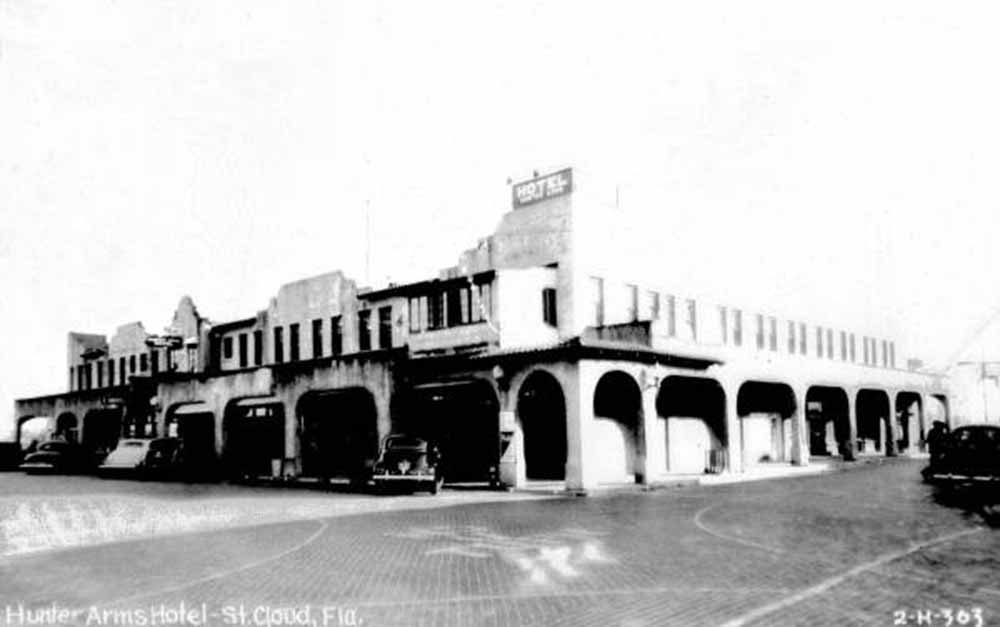
Following World War I, the United States economy was thriving. Florida’s population skyrocketed as cheap land, combined with the improved roads and railways, drew northern tourists and developers to the state. In 1925, Ohio mausoleum builder Grover C. Hunter sought to take advantage of the trends and traveled to St. Cloud. By 1926, he hired Ohio architect Harlan Jones to design a hotel and Ohio contractor W.A. Steffle to build it. This construction forced the relocation of the existing Bon Air hotel and the demolition of the Peckham Building, nicknamed the “New York Stores.” The initial cost was estimated at $100,000 but rose to $250,000 when work began. Jones designed it in the Mediterranean Revival style. His intention was to create what was locally known as a “Spaniflora” atmosphere, which was popular in early St. Cloud. Other businesses on New York Avenue had incorporated similar design elements. The original exterior of the hotel featured walls built of brick and steel and finished with gray stucco. The “Spaniflora” elements extended to the interior with Spanish tile floors, a coquina rock fireplace, and ceiling beams fashioned from pecky cypress. To make room for the new hotel, the Bon Air Hotel was moved and the Peckham Building, known locally as the “New York Stores,” was torn down. Opening January 22, 1927, guests would pay a flat rate for the season which included a room and two meals a day. The hotel became one of the gems of the business district. Hunter intended to build it as a spec but decided to stay, following the 1929 Stock Market Crash and subsequent depression. In 1953, Hunter died and his wife, Nona, continued to operate the hotel for several years. After changing owners several times, it was sold and converted into a bed and breakfast in 1994. Hunter’s nephew, local businessman Bill Kirkpatrick, stated “They have done a great job. It could be a great uplift to the area.” The building, while remaining a bed and breakfast seasonal type residency, was sold to ADMC in 2016. The hotel was renovated to make the individual rooms more appealing, but still retains the building’s historic characteristics. The Hunter Arms Hotel occupies 3/4 of a city block and is considered a key element in the revitalized St. Cloud downtown Main Street district.
Fisk Funeral Home
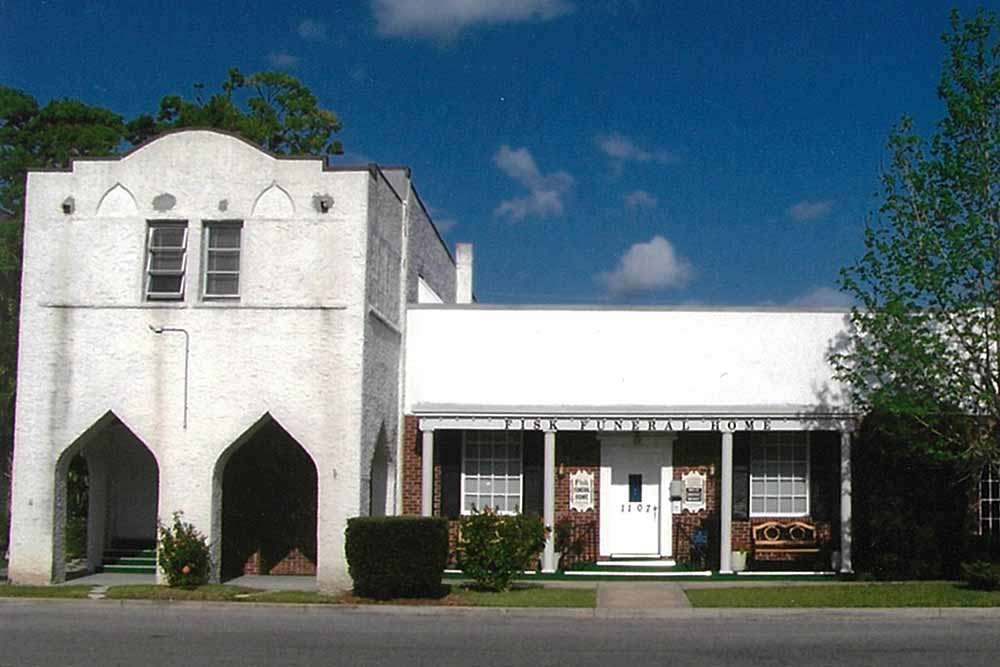
In 1915, licensed embalmer Carl E. Carlson opened his undertaking establishment in a rented building on Massachusetts Avenue and 11th Street. In 1918, he purchased the building belonging to St. Cloud’s first physician, Dr. C.S. Cooper, next to the Grand Army of the Republic building on Massachusetts Avenue. Carlson remodeled it into a then state-of-the-art undertaking establishment. A November 14, 1918, newspaper ad for Carlson & Newton Funeral Directors and Embalmers indicated a new partner, John Newton. He departed the next year, and was replaced by George Barber, one of the original Union Army veterans who settled in St. Cloud. Dana Eiselstein and his brother William partnered in 1919 to purchase the Carlson Funeral Home. Barber, a city councilman at that time, remained with the new firm, renamed the Eiselstein Brothers. In 1925, the firm hired architects Isabel Roberts, an associate of Frank Lloyd Wright, and Ida Annah Ryan to design a new chapel. The building’s exterior was remodeled and given a pseudo-Spanish style stucco finish. The first all-female architectural firm in Orlando, Ryan & Roberts designed many other buildings in St. Cloud in what became a local style known as “Spaniflora.” In 1928, William Eiselstein married Susie Fisk. Her nephew, Robert A. “Bob” Fisk, graduated from Cincinnati College of Embalming in 1942, and then served during World War II with the U.S. Naval Hospital Corps. In 1949, Bob Fisk became the funeral director for the Eiselsteins’ funeral home. In June that same year, Dana Eiselstein died suddenly; William passed in 1951 and Bob became the funeral home’s manager. In 1958, William C. Journigan purchased interest in the business from Dana’s wife, Louise Eiselstein, and the name was changed to the Eiselstein, Fisk & Journigan Funeral Home. After Susie Eiselstein’s death in 1964, the name changed again to Fisk & Journigan. In 1972, the old chapel was converted into office space and the exterior was given a colonial red brick finish. Bob’s son, Bill Fisk, joined as funeral director in the 1970s. Bob Fisk became the sole owner of the company, renamed Fisk Funeral Home, in 1983. Bob served as an unofficial local historian for St. Cloud and co-authored the 2002 book, Images of St. Cloud. For most of the 20th century, Fisk Funeral Home was the only funeral home operating in St. Cloud.
Mt. Peace Cemetery
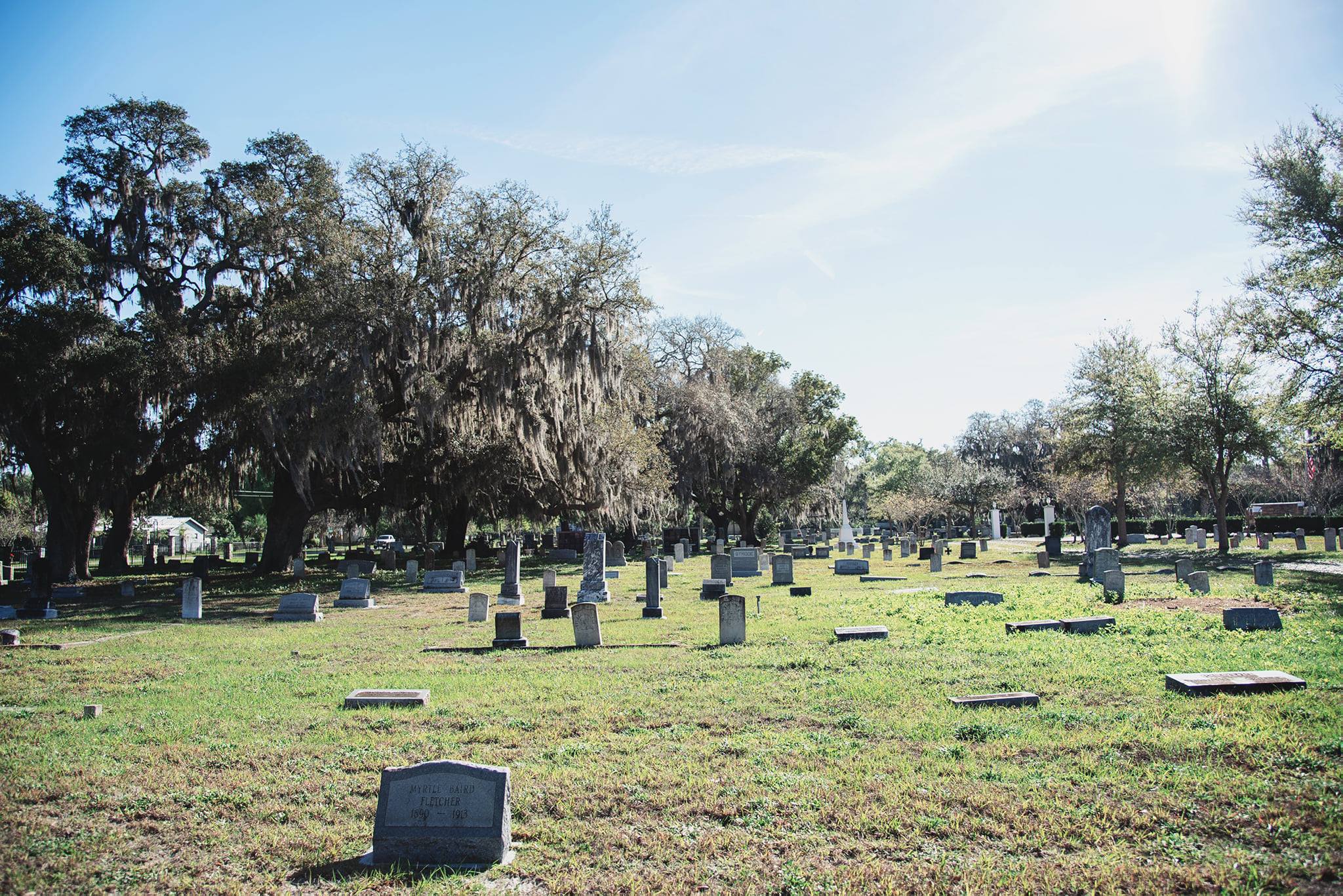
Beginning in 1909, Union Civil War veterans from all over the United States began to move to St. Cloud, many drawn by promotions in Northern newspapers. The first veteran to die in St. Cloud, Lucius L. Mitchell, passed away in December 1909, and because there was no veterans cemetery in St. Cloud, he was interred in nearby Kissimmee. To remedy this, the local chapter of the Union veteran’s group, the Grand Army of the Republic (GAR), helped establish a cemetery named Mount Peace, for Union veterans. The Seminole Land and Investment Company deeded a ten-acre tract to the Mount Peace Cemetery Association, which began selling plots. Union veterans were buries here from 1910-1942, totaling 427 burials. Among them are three African American soldiers who served in the United States Colored Troops, fifteen documented survivors of the Andersonville prison, and one Medal of Honor recipient, Two Confederate veterans, one of whom served for both armies, are buried here. Later, veterans of other more recent conflicts were buried in Mount Peace. Lucius Mitchell’s remains were relocated to Mount Peace years after the cemetery opened. The local Sons of the Union Veterans Camp was named Lucius L Mitchell Camp in his honor. Known as “the Soldier City,” St. Cloud had the largest concentration of Union army veterans in the South. The first Union veteran buries in Mount Peace was Orrin B. King on February 4, 1910, and the last was William C. Russell, who died August 12, 1942. Since the cemetery opened, nearly 1,000 additional veterans of later conflicts have been buried in Mount Peace. These burials include 2 from the Plains Indian wars, 286 from the Spanish America War, 163 from World War I, 246 from World War II, 52 from the Korean War, 36 from the Vietnam War, 1 from the Gulf War, and 116 who served in peacetime. The first World War I veteran buried in Mount Peace was Walter Koch, who died in France, and the last was Dan Armstrong, who died just short of his 105th birthday. World War I veteran Edwin Young served in the 31st Infantry “Polar Bear” regiment. World War I Army Nurse Corps 1st Lt. Jessie Theige was one of the few women to receive full veteran benefits. John Hixon, a World War II prisoner of War (POW) of Japan, endured the Bataan Death march. Wayne Horner was a World War II POW held at Germany’s Stalag 4B Muhlberg Sachsen. World War II veteran James Buckner survived the 1941 attack on Pearl Harbor.
In 2021 we worked with a film crew to create St. Cloud’s Historic Documentary. You can see behind the scenes photos and information about that project here. The full documentary can be seen below.
